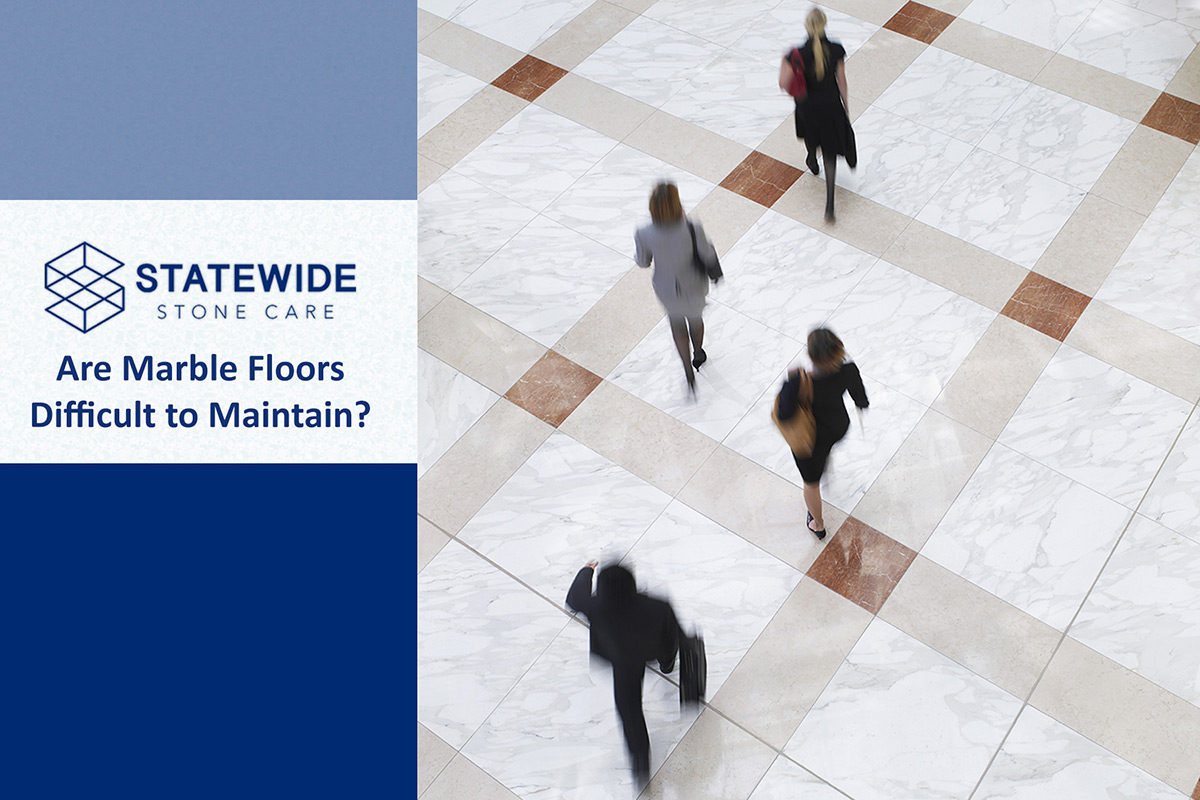As a flooring option, marble floors offer a beautiful and timeless addition to any space, whether it’s a home, office, building lobby, etc. Marble is a natural stone with veined patterns and colored marble variations that can give the space an elegant look for many years to come. But while marble is relatively easy to maintain day-to-day, it is also a porous material, which means that maintaining its beauty in the long term requires some occasional extra care. Let’s discuss marble maintenance in general, and what is required in order to keep your marble surface looking great for years down the road.
Tips for Maintaining Your Marble Floors
The key to keeping marble stone floors looking their best is to think of your marble maintenance strategy in terms of short-term, mid-term, and long-term maintenance. The following tips will cover each of these.
Clean on a Weekly or Daily Basis
For short-term maintenance, marble floors should be cleaned on a regular basis. For daily cleaning, you can simply use a soft, dry push mop to remove dirt and dust from the floor. This sounds simple enough, but it’s also very important because if dirt is left on the floor, it can be ground into the floor by people walking on it, causing microscopic scratches and dulling the finish. For weekly care (or at least every few days), use a soft mop and warm water to clean the floors. If you use any type of cleaner when mopping, make sure it’s a cleaning solution specifically designed for marble surfaces. Do NOT use ammonia, vinegar, or anything acidic or corrosive, as these can interact chemically with the stone and cause permanent damage. Establishing a regular cleaning regimen like this can keep your marble floors looking their best and also prevent dust and dirt from accumulating in the pores of the marble (or in the grout connecting marble tile floors).
Perform Routine Maintenance on the Stone
For mid-term marble maintenance, you should go beyond the basic cleaning and give your marble floors a thorough cleaning and inspection. This is to remove any dirt or residue that may have become embedded in the marble over time, as well as to look for signs of scratching, chipping, or cracking and make needed repairs before these become bigger problems. For this step, consider hiring a stone care professional to come in every few months and perform routine maintenance. For highly polished marble floors, you may want to schedule maintenance more frequently than for honed marble or matte finishes as polished finishes can show signs of wear more easily. (Statewide Stone Care can offer a variety of regular maintenance packages.)
Seal Stone Regularly
For long-term maintenance, marble floors should be treated periodically with a sealer to protect the marble from staining and etching. Sealing marble creates a protective barrier on the surface that keeps liquids and other substances from seeping into the stone, thus preventing discolorations and damage. For best results, have a professional do the sealing for you. For most marble floors, re-sealing can be done once every few years, but more frequent sealing may be required for outdoor surface or high-traffic areas. Your stone care professional can advise you on how often your floors should be re-sealed.
Work with a Marble Stone Care Professional
As you can see, marble maintenance is not a difficult task if given the right amount of attention. However, long-term marble care can also be tricky, so it’s best to work with an experienced marble stone care professional who knows how to properly maintain marble surfaces and can assess any damage that may have occurred over time. That way, you can rest assured that your marble floors will look beautiful for many years to come.
At Statewide Stone Care, our technicians are highly trained in all aspects of care and maintenance for stone and tile flooring, including all types of marble. We can work with you to establish a regular maintenance regimen that is just right for your needs. For a free estimate, contact us today.


